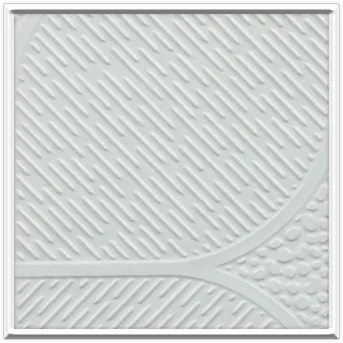Nov . 07, 2024 17:52 Back to list
Current Trends in Metal Grid Ceiling Pricing and Market Analysis
Understanding the Pricing Trends of Metal Grid Ceilings
Metal grid ceilings have become a popular choice in modern architecture due to their functionality, aesthetic appeal, and durability. These ceilings are characterized by a framework of metal tiles or panels suspended from the ceiling structure, providing not only an attractive finish but also practical benefits such as acoustic insulation, ease of maintenance, and accessibility for electrical or mechanical installations. In recent years, the pricing of metal grid ceilings has fluctuated, influenced by various factors in the market. This article explores these pricing trends and the underlying causes.
Market Demand and Supply Dynamics
The pricing of metal grid ceilings is largely influenced by supply and demand dynamics within the construction industry. With the increasing trend towards commercial and industrial constructions, especially in urbanizing regions, the demand for high-quality ceiling solutions has surged. Construction companies and architects are continually seeking materials that not only meet aesthetic requirements but also offer durability and ease of installation. This spike in demand can lead to increased prices, especially if the supply of raw materials is constrained.
On the other hand, the availability of specific metal materials can also impact pricing. As with many commodities, prices can fluctuate based on the underlying costs of production, availability of metals like aluminum and steel, and geopolitical factors affecting trade. For instance, tariffs on imported metals can lead to increased costs for manufacturers, which are often passed on to the consumers. Similarly, if there is an excess supply of raw materials, prices may stabilize or even decrease, making metal grid ceilings more affordable.
Technological Advancements
Technological innovation in manufacturing processes also plays a role in shaping the prices of metal grid ceilings. Advances in production techniques can lead to more efficient manufacturing, reducing labor costs and time. For example, improvements in CNC (computer numerical control) machining and automated processes allow manufacturers to produce metal grid ceilings at a lower cost. This reduction in production costs can enable manufacturers to offer more competitive pricing, attracting consumers looking for cost-effective yet high-quality ceiling solutions.
Moreover, the development of new materials and coatings can enhance the performance characteristics of metal grid ceilings. For instance, ceilings that feature enhanced acoustic properties or are treated to resist corrosion may come at a premium but can provide additional value in terms of longevity and maintenance costs. As customers become more educated about the benefits of advanced materials, they may be willing to pay higher prices for products that meet their functional and aesthetic needs.
metal grid ceiling price

Economic Conditions
Economic conditions can significantly impact the pricing of metal grid ceilings. During periods of economic growth, construction activities tend to increase, resulting in higher demand for materials such as metal ceilings. Conversely, during economic downturns, construction slows, leading to a drop in demand and, subsequently, lower prices. The current economic environment, characterized by inflationary pressures and changes in consumer purchasing behavior, can create uncertainty in pricing trends.
Additionally, fluctuations in currency exchange rates can also affect pricing. Companies that source raw materials from international markets may face increased costs if their local currency weakens against the currencies of suppliers. This situation can lead to increased prices for consumers in the domestic market.
Sustainability and Environmental Regulations
Sustainability is becoming an increasingly important factor in construction and design, and metal grid ceilings are no exception. As regulations surrounding sustainable building practices tighten, manufacturers are compelled to adopt greener practices, which can sometimes raise production costs. Products that utilize recycled materials, for instance, may come at a higher initial price point due to the additional processing involved. However, as sustainability becomes a core consumer value, many are willing to invest more upfront for environmentally friendly products that also promise long-term savings.
Conclusion
In summary, the pricing of metal grid ceilings is influenced by a confluence of factors, including supply and demand metrics, technological advancements, economic conditions, and shifting consumer priorities toward sustainability. As the construction landscape continues to evolve, it is essential for stakeholders—architects, construction firms, and consumers—to remain aware of these trends to make informed decisions regarding their investments in metal grid ceiling solutions. Understanding the nuances of the pricing mechanisms will not only facilitate better purchasing decisions but will also enable the development of spaces that are both functional and aesthetically pleasing. As we move forward, the role of metal grid ceilings in architectural design appears to be more significant than ever, providing an intersection of practicality and style.
-
Durable Ceiling T Grid Systems | Easy InstallationNewsAug.29,2025
-
PVC Gypsum Ceiling: Durable, Laminated Tiles for Modern SpacesNewsAug.28,2025
-
Pvc Gypsum Ceiling Is DurableNewsAug.21,2025
-
Mineral Fiber Board Is DurableNewsAug.21,2025
-
Ceiling Tile Clip Reusable DesignNewsAug.21,2025
-
Ceiling T Grid Modular DesignNewsAug.21,2025







